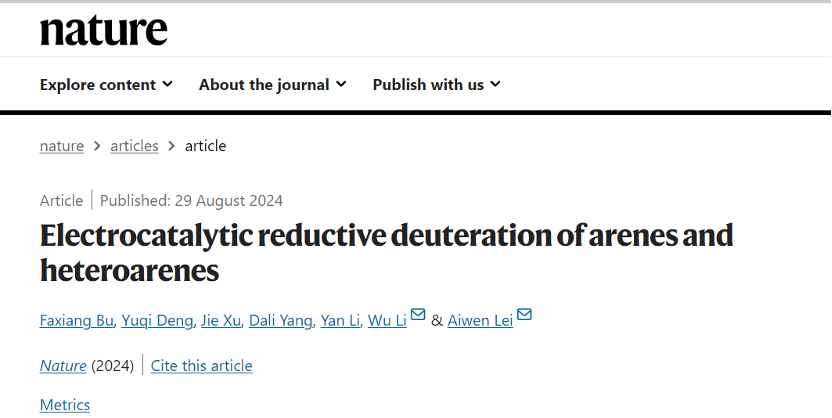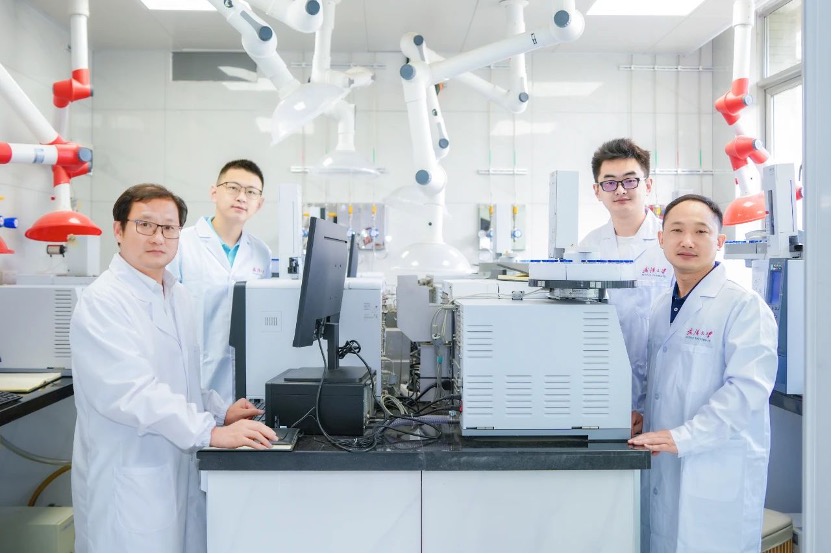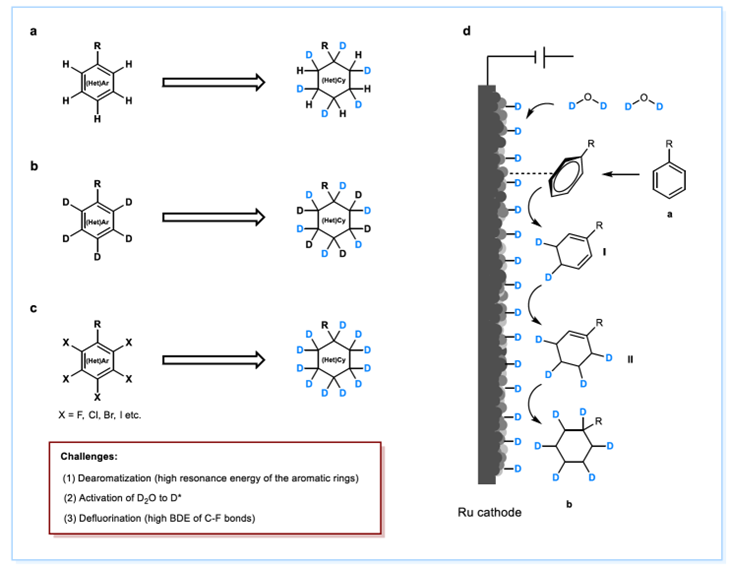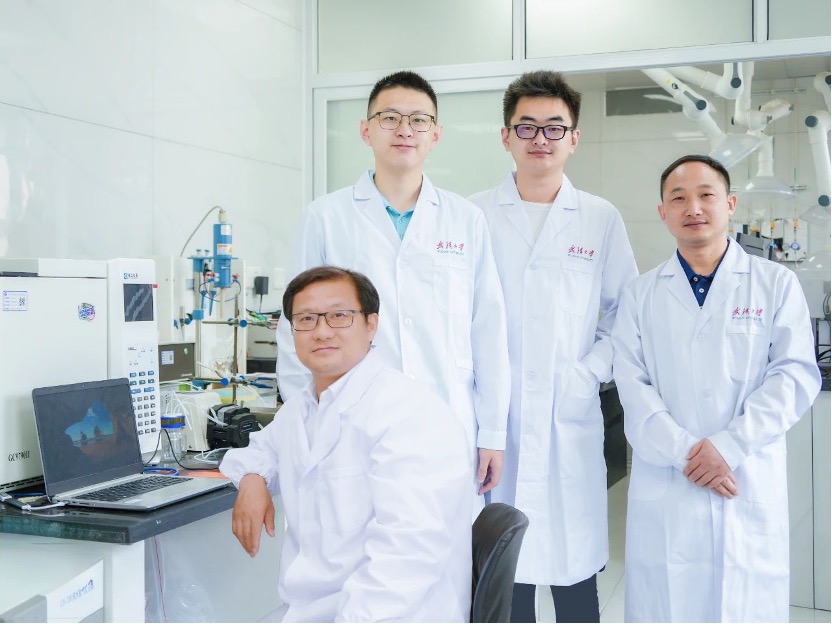On August 29, Nature published online the latest electrosynthesis research of the team led by Professor Lei Aiwen and Professor Li Wu's team from Wuhan University's College of Chemistry and Molecular Sciences and the Institute for Advanced Studies (IAS), entitled “Electrocatalytic Reductive Deuteration of Arenes and Heteroarenes”. Dr. Faxiang Bu from the College of Chemistry and Molecular Sciences of Wuhan University and Dr. Yuqi Deng from the Institute for Advanced Studies were the co-first authors of the paper, while Professor Li Wu and Professor Lei Aiwen were the corresponding authors, and Wuhan University was the sole signatory.

Image showing the paper’s entry on Nature website
Deuterium labeling is widely used in new drug creation, mass spectrometry internal standard, chemical reaction kinetics, biotracer and other research. For example, new deuterium-labeled drugs such as deuterobenazine (Antetan), donafenib (Zepsan), and VV116 (Mindevi) have been approved and marketed. In addition, MRI deuterium metabolism imaging has received widespread attention as a newly emerging molecular metabolism imaging technique. However, the development of deuterium labeling methods is limited, and the developed methods present great challenges in introducing multiple deuterium atoms and high deuterium labeling rates. These factors contribute to the very high price of deuterium-labeled compounds. It is important to develop efficient deuterium labeling methods using inexpensive deuterium sources. Saturated (hetero)cyclic structures are widely present in pharmaceuticals and natural molecules, and the synthesis of deuterium-labeled saturated (hetero)cyclic compounds from inexpensive and readily available aromatic compounds is a cost-effective and efficient synthetic method. Until now, a universal deuterium-labeled method for the reduction of aromatic hydrocarbons has not been developed.

From left to right: Professor Lei Aiwen, Professor Deng Yuqi, Professor Bu Faxiang, Prof. Li Wu
The team of Professor Lei Aiwen and Professor Li Wu has successfully solved this challenge through a new technique of electrosynthesis starting from original electrode materials. The strategy is to realize the deuterium reduction reaction of aromatic rings under mild conditions by electrocatalysis, using cheap and easily available deuterium water as a deuterium source. The method is widely applicable and can realize the reductive deuteration reaction of a variety of aromatic and heteroaromatic hydrocarbons, and a variety of deuterated cyclic and heterocyclic compounds have been successfully synthesized. In addition, the method can also be used to synthesize saturated deuterated cyclic compounds by defluorination reaction in tandem with aromatic reduction reaction. Thirteen deuterium-labeled drug molecules have been successfully synthesized by this method, which fully demonstrates its great potential and broad prospect in drug development and practical application.

Because of the green, safe and low energy consumption characteristics of the new technology of electrosynthesis, the International Union of Pure and Applied Chemistry (IUPAC) in 2023 rated it as one of the top 10 emerging technologies of that year. This new technology is expected to be developed into a new quality productivity for solving environmental pollution problems, safety production risks and high energy consumption of the current fossil energy-based current productivity, helping green manufacturing and high-quality development.

This work was supported by the National Natural Science Foundation of China (NSFC), the National Key Research and Development Program (NKRDP), the Wuhan Science Foundation and other funds. It is reported that Professor Lei Aiwen's team also published a paper in Science on July 11, 2024 on the first programmed alternating current (AC) synthesis for copper-catalyzed carbon-hydrogen bonding reactions.
Science article link: https://www.science.org/doi/10.1126/science.ado0875
An article titled “Radical-triggered translocation of C–C double bond and functional group” was accepted for publication in Nature Chemistry on August 14, 2024.
Nature Chemistry link: https://doi.org/10.1038/s41557-024-01633-7


